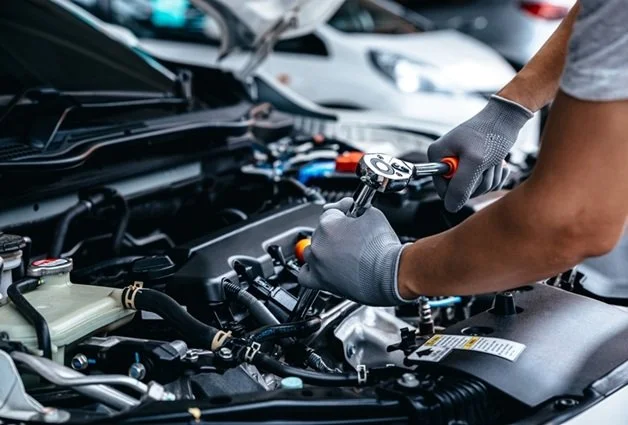What Does R&R Mean in Auto Repair?
Ever scratched your head over "R&R" on your auto repair bill? Spoiler alert: it’s not “rest and relaxation.” What does R&R mean in auto repair? Understanding this won’t just decode your repair costs—it’ll keep you in the loop on what’s really going on under the hood!
Understanding R&R in Auto Maintenance
"R&R" might sound like rest and relaxation, but in the world of vehicle maintenance, it stands for "Remove and Replace." Think of it as your car's version of a spa day—out with the old, in with the new. Got worn-out brake pads? The mechanic swaps them out faster than you can say "road trip," leaving your car refreshed and road-ready.
This term is a big deal—it means the part isn’t just getting a quick fix; it’s getting the boot and a shiny new replacement. Mechanics use R&R auto parts to keep your ride reliable, safe, and running like a champ. You’ll probably spot it on repair invoices, so you no longer need to fill your search history with; what does R&R mean?.
The Significance of R&R for Your Vehicle
Remove and Replace: because even your car parts know when it’s time to call it quits. Brake pads, timing belts, suspension parts—they all have their expiration dates. Ignoring them? That’s just asking for trouble (and probably a much bigger repair bill). Keep your car happy, your wallet intact, and your safety on point. Don’t let worn-out parts overstay their welcome.
Plus, R&R maintenance is about efficiency and carrying out the task rightly. While it might be possible to mend some parts, such maintenance procedures can consume more time, be costly, or might be unreliable. Instating a new or refurbished part typically ensures improved performance and tranquility for vehicle owners.
Moreover, many present-day cars encompass increasingly intricate systems. A defective element in such a system may remain uncorrected even after repair. This is why you need to choose experienced professionals for R&R, meaning automotive repair and replace.
When is R&R Required?
Now you know the R&R meaning, it usually comes into play when a part is beyond saving, but it all depends on the part, its condition, and whether the mechanic’s expert judgment says “fix it” or “ditch it.”
Here are some typical situations where R&R might be required:
Severe Deterioration: Elements like brake pads, tires, or spark plugs have a finite lifespan and necessitate replacement when they are totally worn down.
Safety Threats: Vital safety components, such as airbags or seat belts, require R&R to assure proper operation.
Producer Recommendations: Some parts, like timing belts, are intended to be replaced at specific intervals as a part of regular maintenance to prevent potential problems.
Wreck Damage: If your vehicle has been involved in a mishap, damaged parts such as headlights or bumpers usually need complete replacement rather than repair.
Outdated or Faulty Components: Certain pieces might stop operating correctly due to age or technical obsolescence. For instance, a dysfunctional electronic sensor might call for replacement instead of repair.
Identifying when R&R is needed helps you in staying aware of your vehicle's service needs. It assists you in making more informed decisions regarding repairs and comprehend why a mechanic advises replacing a part.
Whether you're looking for affordable auto repair in Peoria, AZ, or just want to keep your car running smoothly, knowing these details can make a big difference.
How Knowing R&R Lessens Your Stress
For vehicle owners, grasping the meaning of R&R used parts and how they fit into auto maintenance carries multiple benefits. It helps you decode your car's repair needs, saving you stress now and cash later—because who needs more surprises or expenses?
Consider this term your new secret weapon in understanding auto repair jargon and staying on top of your car’s care like a pro.
